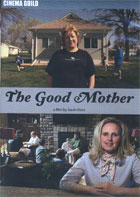
The Good Mother 2008
Distributed by Cinema Guild, 115 West 30th Street, Suite 800, New York, NY 10001; 212-685-6242
Produced by Anne Labro
Directed by Sarah Klein
DVD, color, 68 min.
Sr. High - Adult
American Studies, Gender Studies, Parenting, Women's Studies, Economics, Sociology
Date Entered: 06/17/2010
Reviewed by Winifred Fordham Metz, University of North Carolina at Chapel HillOrganized in 1935 by J.C. Penney, American Mothers Incorporated has been awarding "Mother of the Year" for 75 years. In April 2008, 23 states nominated their best mothers for the award. Sixteen of these women traveled to Nebraska to compete in the three-day competition. Director Sarah Klein follows the stories of four: Tonia Nantkes, mother of three from Nebraska; Kimberley Shelton, mother of two, from New Hampshire; Renee Spieth, mother of five from Indiana; and mother of five, Maria Dowdle of Oregon.
The film opens crisply with richly colored shots of each of the contestants applying finishing touches to their coiffure in preparation of appearing before the judges at competition. Some speak candidly to the camera regarding why they are there and/or what they think their chance of winning is, while others focus on getting their make-up just so. The camera is effectively close in these scenes (cleverly placed behind a dressing table mirror) and suggests a potential for intimacy with the subjects. In fact, many seem completely at ease in front of the camera and, through the course of the film, offer frank and earnest views into their daily lives as well as their thoughts on participating in the competition.
Technically, the film is tightly scripted and well shot. Visually, this film is very polished. Klein clearly makes deliberate artistic choices with her titling, music and framing to evoke a modern reflection of the vintage aesthetics displayed in the snippets of 1930s, '40s and '50s archival footage incorporated throughout the film. The titles with their gently curling cursive font set against homey fleur-de-lis wallpaper cleverly pay homage to a bygone era of homemakers past with chintz curtains and aprons to match. The sound editing and music choices keep things ticking along tidily as they liberally borrow the style and pacing of a catchy 1950s television or game show theme. Critically, surface level seems to prevail here. While Klein deftly sets the stage for a visually pleasing piece, the film ultimately does not deliver much by way of critical examination.
Klein does seem to lay the ground work for an analytical approach early on in the film, pointedly offering up a selected few of the seven requirements for application in the American “Mother of the Year” competition. She shares that a contestant must be --“…married to her husband, a man in a legal ceremony” and “be an active member of a faith-based organization.” The audience is allowed several peeks behind the curtain due largely to the impressive ease in which the contestants handle being filmed, but the subject begs for hard questions that never come. Sue Hickenlooper, past president of American Mothers Incorporated, even asks her interviewer at one point in the film, in a clear effort to intuit an unspoken question, "What are you trying to get at, here?"
The audience members are left to decipher why they are being shown events in this crafted way. What is presented in the documentary certainly leaves ample room for dialogue, though. And, could heartily lend itself to a multilayered discussion on American culture, feminist ideals, a notion of American motherhood, what constitutes motherhood today, stereotypes and classism.
This film is recommended for people interested in social issues, American studies, gender studies, parenting, women’s studies, and economic studies. This film may easily be used in high school classrooms and up to motivate discussions on these and other similar topics.
Awards
- 2009 Rhode Island International Film Festival Award Winner